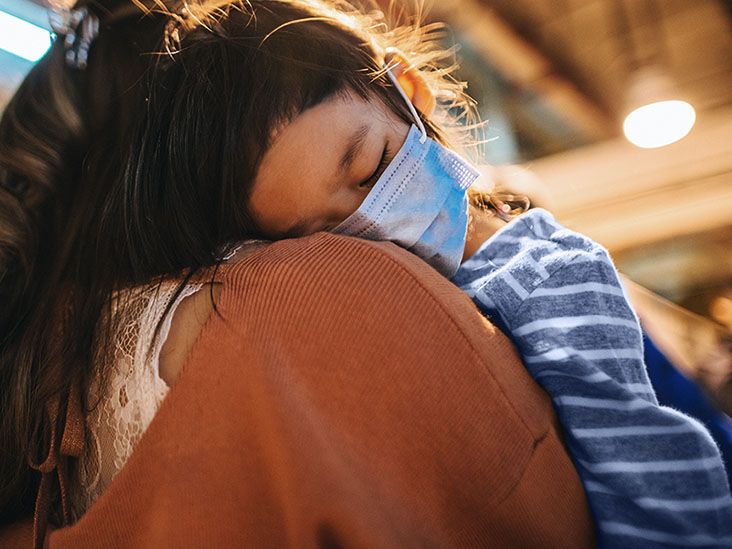Some research suggests COVID-19 may directly or indirectly lead to the development of diabetes in children, but this requires further research.
Studies found an increase in diabetes cases in children during the COVID-19 pandemic, which may suggest a link between the two conditions.
This article examines the possible link between diabetes and COVID-19, its symptoms, risks, and when to contact a doctor.

There is not enough research to know if people — specifically children with diabetes — are more likely to contract the COVID-19 virus than those without the condition. However, those with diabetes are at risk of worse complications of the virus.
Children with diabetes may have a
A
There is no clear explanation for how a SARS-CoV-2 infection may link to diabetes. SARS-CoV-2 is a variant of coronavirus that causes COVID-19. Research suggests the virus may affect blood sugar (glucose) metabolism. People who are more susceptible to diabetes may be particularly vulnerable to these bodily changes.
The increased rate of type 1 diabetes may have links to inflammation and changes in the immune system with COVID-19.
The indirect effects of COVID-19 may have associations with diabetes, such as stress and social isolation. Stress
An increase in sedentary lifestyles and unhealthy eating habits during the pandemic may also have played a role.
Further research is necessary to understand possible direct or indirect links between COVID-19 and diabetes.
A
- attacking pancreatic cells
- high blood sugar due to a cytokine storm, which is a severe reaction of the immune system
- changes in glucose metabolism due to the infection
The report found that people under 18 years who had COVID-19 were more likely to have a new diabetes diagnosis more than 30 days after the disease compared to those without COVID-19 and other acute respiratory infections.
Some of the new diabetes diagnoses were likely to have occurred in people with prediabetes, which affects 1 in 5 teenagers in the United States.
However, a Danish 2023 study did not find a link between COVID-19 and type 1 diabetes.
Children with diabetes may have a
Diabetes may increase the risk of hospital admission, morbidity, and mortality with COVID-19. Comorbidities and a weakened immune system may increase the risk of COVID-19 complications and mortality.
COVID-19 can make blood sugar more difficult to control, and high blood sugar levels may link to severe COVID-19 in children. Obesity can also increase the risk of severe infection.
Both type 1 and 2 diabetes can increase the risk of severe illness with COVID-19. Research in adults suggests there is
According to the American Diabetes Association (ADA), the outcomes of diabetes and COVID-19 may vary depending on other existing health issues and whether complications develop.
People with any diabetes type may have more negative outcomes if they have existing health issues relating to diabetes and go on to develop COVID-19.
Certain factors, such as high blood pressure, cardiovascular disease, and obesity,
Diabetic ketoacidosis (DKA) is a life threatening complication of diabetes.
A
Therefore, COVID-19 may play a role in the development of DKA in children with type 1 diabetes and DKA severity.
A 2021 study found the number of DKA cases increased in children during the COVID-19 pandemic, with rates almost doubling in 2020 compared to those in 2019. DKA cases were also more severe at diagnosis.
Of 125 people under the age of 18 years, 23.1% had a new diagnosis of diabetes in 2020, with two cases of type 2 diabetes. DKA occurred in 66.7%, including both cases of type 2 diabetes.
Symptoms of type 1 diabetes include:
- frequent urination
- feeling very thirsty
- feeling hungry even when eating enough
- weight loss, despite increased appetite
- blurry vision
- fatigue
- slow-healing wounds, such as cuts or bruises
Learn about the differences between type 1 and type 2 diabetes.
People will need to contact a doctor if a child:
- develops symptoms of diabetes
- has diabetes and develops symptoms of COVID-19
People will need to seek immediate help for any severe COVID-19 symptoms, such as:
- difficulty breathing
- an inability to wake or stay awake
- confusion
- pressure in the chest
- a bluish or other skin color changes in the face or lips
If a child has any signs of DKA, they will need immediate medical attention. Early symptoms include:
- a very dry mouth
- increased thirst
- frequent urination
- high blood sugar levels
Research suggests a possible link between COVID-19 and diabetes. During the pandemic, there was an increase in diabetes incidence among children.
COVID-19 may directly contribute to diabetes due to changes within the body that affect blood sugar levels. Indirect causes may include an increase in sedentary lifestyle and stress due to the pandemic.


